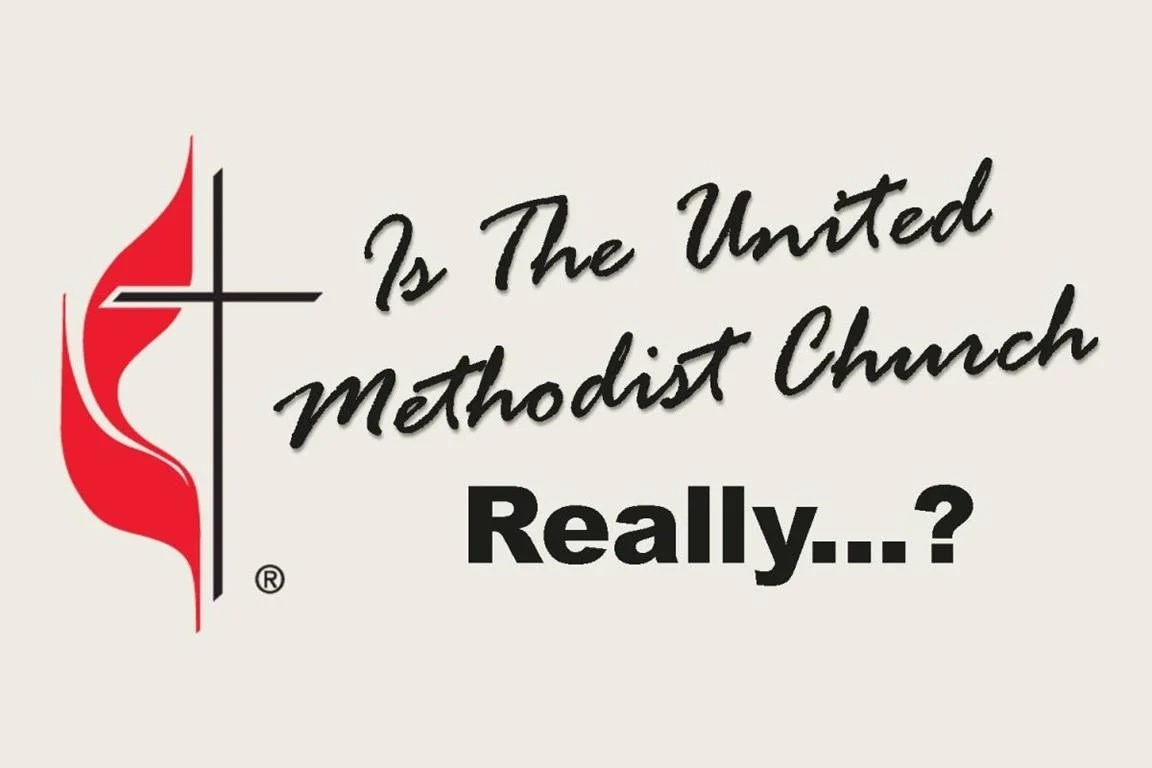
Is The United Methodist Church really... ? (Part 4)

With some congregations considering leaving The United Methodist Church or just wondering about its future, Ask The UMC offers a series of questions and answers to help clear up some common misperceptions or misinformation around disaffiliation. Graphic by Laurens Glass, United Methodist Communications.
At Ask The UMC, we have been answering an increasing number of questions from congregations wondering about the future of The United Methodist Church and whether they should consider disaffiliating from it. Some of these questions reflect widespread misperceptions or misinformation that some congregations are receiving as they discern their next steps.
This is the fourth of a series of articles offering accurate responses to such misperceptions or misinformation. As the previous three, this article is based on a variety of questions we have received multiple times through email, phone calls, and live chat. The third article addresses the use of Paragraph 2548.2, changes in abortion statements, and payment of apportionments. The second article focuses on matters relating to human sexuality. The first article in this series focuses on matters relating to theology and pensions.
We welcome your questions and invite you to contribute to future articles in this series by sharing what you are hearing about the process of disaffiliation or the future of The United Methodist Church. Write to AskTheUMC@umc.org.
Is The UMC really…?
14. Allowing congregations that disaffiliate to retain their current appointed pastor or deacon?
The answer depends on whether the current clergy disaffiliate as well.
United Methodist bishops are authorized to appoint clergy to United Methodist congregations.
When a congregation is disaffiliated, it is no longer a United Methodist congregation. Thus, United Methodist appointments to a congregation that disaffiliates terminate on the effective date of disaffiliation as set by the annual conference.
If the current clergy disaffiliate with the congregation, it is up to the congregation or decisions by a denomination it may join whether the current clergy continue to serve them. United Methodist deacons and local pastors may or may not be accepted as clergy by other denominations. It is more likely that United Methodist elders may be.
If the current clergy remain United Methodist, they will no longer be appointed to the disaffiliated congregation and can no longer function as clergy for them. The United Methodist bishop will seek to appoint these clergy elsewhere as soon as possible. The congregation will need to seek new clergy leadership.
15. Ending United Methodist Church memberships of those whose local church disaffiliates?
Yes. When a local church disaffiliates, the Judicial Council has made clear all of its members depart the denomination with it. “Disaffiliation… under ¶2553 involves both church membership and property… the membership departs from The United Methodist Church” (Decision 1449, Question 5). From the standpoint of The United Methodist Church, it is not possible to be a member in The United Methodist Church and a member in another denomination (or an independent church) at the same time (Paragraph 241 of the 2016 Book of Discipline).
So if your congregation has voted to disaffiliate, and you wish to remain a member of The United Methodist Church, you will want to find another United Methodist congregation to join before the effective date of disaffiliation set by the annual conference. You may ask your district office for assistance in this process.
16. Permitting 10% of the professing members of a local church to sidestep conference requirements that a request for a called charge conference to vote on disaffiliation come from a church council or other leadership body of a local church?
No. But to understand the answer to that question, it is important to understand how this allegation could have been made.
Paragraph 248 of the 2016 Book of Discipline states that a church conference “may be called” by the district superintendent under several circumstances, including in response to “a written request to the district superintendent by … 10% of the professing membership of the local church.” The key language here is “may.” Receiving a request from 10% of the professing membership does not compel the district superintendent to call a church conference.
Meanwhile, many conference disaffiliation processes require a church council or other leadership body to make the request for a called church conference for disaffiliation. Paragraph 2553.4 states “the terms and conditions for that disaffiliation shall be established by the board of trustees of the applicable annual conference, with the advice of the cabinet, the annual conference treasurer, the annual conference benefits officer, the director of connectional ministries, and the annual conference chancellor.”
Each conference’s board of trustees sets the terms and conditions for its conference. The role of the district superintendents in that process is advisory only. Once the trustees set the terms and conditions, only they can alter them. The annual conference may provide additional standard terms. Where the terms and conditions from the trustees or additional standard terms set by the conference state that the contact to initiate a called church conference must come from the church council or equivalent leadership or administrative body, the district superintendent is bound to schedule called church conferences only for those requests that come through that channel.
And if the terms and conditions are not that specific, the district superintendent, per Paragraph 248, retains discretion about whether and when to call for the church conference. Paragraph 2553 simply notes the called church conference must occur within 120 days of the time at which the district superintendent calls for it. In all cases, the district superintendent has the authority to call a church conference. The local church does not.
Dakotas Conference Resources:
Process for Disaffiliation approved by the 29th Session of the Dakotas Annual Conference
Checklist for the Disaffiliation Process
Questions to research before disaffiliating